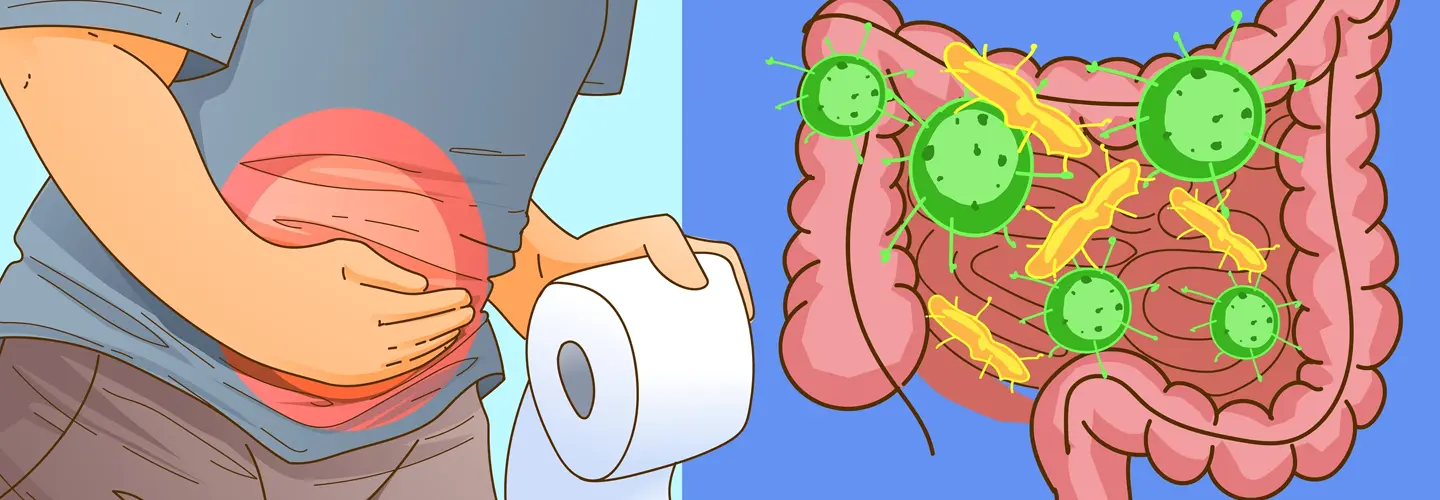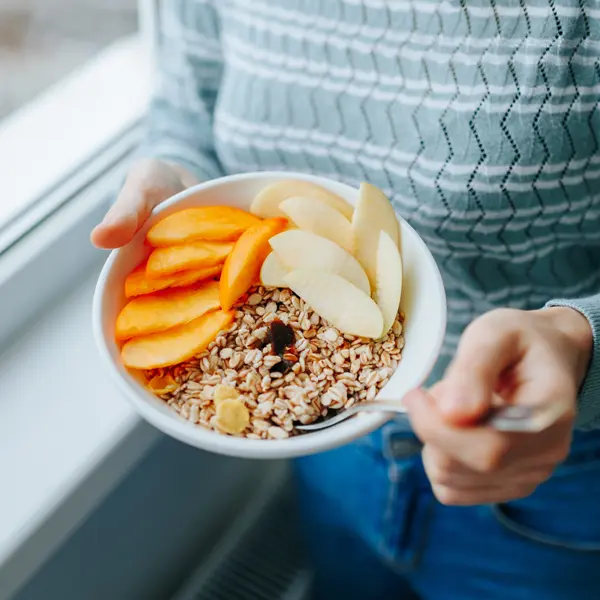Daily Health Check! What is Your Bowel Movement Telling You
You know how important it is to monitor your health, which is why you check your body temperature whenever you’re not feeling well. This is also the reason why many of you stay on top of your hygiene every day. But here’s a question: How often do you actually take a moment to check in on your bowel movements?
It might seem strange, but your stool health can actually reveal a lot about your body. From the color and texture to how often you defecate, each little detail may offer clues about your health.
Read on. You might be surprised at what your stool is telling you!
Stool and Digestion
A stool, commonly known as "poo," is the indigestible waste left behind after your body has processed food. During a bowel movement, this waste exits the body through the rectum and anal canal.1
Stools are composed of 75% water and 25% solid material. The solid components include the following:2
- Undigested food
- Bacteria
- Inorganic substances such as iron phosphate and calcium phosphate
- Cholesterol and other fats
- Protein
Stool Consistency
The Bristol Stool Scale classifies stool into seven distinct types.3 Hopefully, you’ll get the fourth one!

Stool Frequency
How often should you be going to the bathroom? The truth is, it varies from person to person. Some people go once a day, while others might go a couple of times or only every few days.
Studies show that having anywhere between three bowel movements a week and three a day is normal.4 They also point out that little things like occasionally feeling some urgency, straining, or the occasional feeling of not fully emptying are pretty common and shouldn’t be a cause for concern. What’s important is that it feels normal for you.
That said, here are a few things to keep an eye on:
- Too Infrequent (Constipation)
Constipation is a common digestive issue characterized by infrequent, difficult, or painful bowel movements.5 It can occur for a variety of reasons, including poor diet, dehydration, lack of physical activity, or certain medical conditions. - Too Frequent (Diarrhea)
Diarrhea is typically defined as having at least three liquid stools per day.6 It’s normal to have an occasional loose stool after something spicy or after a stressful day. However, if diarrhea persists, it could be a sign of intestinal infection, malabsorption, a digestive condition like IBS (Irritable Bowel Syndrome) or something more serious.
Stool Color
Typically, stool is brown due to bile produced by the liver, which aids in digestion. However, variations in color—such as green, yellow, or black—can signal different health concerns or imbalances in the gastrointestinal system.7
- Brown (Normal)
Healthy stool is usually brown, which is what you want to see. If your stool is consistently brown, it’s a sign that your digestive system is doing its job. - Green
If you've been eating lots of lettuce or leafy greens, the green color in your stool is probably due to that. However, if it's not from your diet, it might mean food is moving too quickly through your intestines. If it's just a one-time thing, there's no need to worry, but if it continues, it could be a sign of an infection or other issue. - Yellow
If your stool is yellow and somewhat greasy with fat deposits, you might be eating food rich in beta-carotene. On the flip side, it could be a sign of malabsorption. Your body isn’t properly digesting or absorbing fats. This condition could be linked to gallbladder or pancreatic issues, digestive enzyme insufficiency, smoking or celiac disease. - Black
Black stool can occur after consuming foods with black food coloring or taking iron supplements. However, if you haven’t eaten anything that could cause this, black stool may be a sign of internal bleeding—particularly from the upper gastrointestinal tract (e.g., bleeding peptic ulcer disease). - Red
Noticing red in your stool? While it could be as simple as eating foods with red coloring, it might also signal bleeding in the lower digestive tract. If the blood is bright red or you see more than just a few streaks, it's important to get it checked out. Conditions like hemorrhoids, diverticulosis (sac formation inside the colon), or even colorectal cancer could be at play, so it’s wise to consult with a doctor to rule out any serious issues.
How to Stimulate Regular Bowel Movement with Fiber
If your stool's appearance is often outside the "healthy" range, a simple way to help improve it is by increasing water intake and eating more fiber!. Fiber helps make your stool bulkier and easier to eliminate.8 To boost your fiber intake, add more fruits, vegetables, whole grains, legumes, and nuts to your meals.
Not sure if you're hitting your daily fiber intake goals? It might be time to consider adding a fiber supplement like Glucopro® to your diet!
Glucopro® contains Resistant Maltodextrin (RMD), a known dietary fiber that’s resistant to digestion and absorption in the upper gastrointestinal tract.9 Together with proper diet and healthy lifestyle, taking a daily dose of a supplement with RMD(resistant maltodextrin) may help:
- Improve gut health by:
- Stimulating production of a prebiotic in the form of short-chain fatty acids (SCFAs)10
- Increasing the number of good bacteria in the gut11
- Promoting intestinal regularity12
- Assist with healthy weight management by:
- Promoting intestinal regularity12
- Decreasing visceral fat13
- Manage blood sugar spikes after meals14
Taking a total of three Glucopro® sachets daily provides 16.2g of fiber, which can help you meet the daily dietary fiber requirements of 20 to 25 grams for Filipino adults 19 years old and above, as highlighted in the Philippine Dietary Reference Intakes (PDRI).15 Dissolve each sachet in a 250 mL glass of water and consume immediately with your meals.
Glucopro® is available online and in leading drugstores nationwide, and on Lazada and Shopee at a suggested retail price (SRP) of Php32.00 per sachet.
It is always best to consult your doctor prior to taking any form of supplements If you continue to notice issues despite making these adjustments, it may be time to consult with a healthcare provider. He or she can help identify the root cause of your bowel issues and suggest a more tailored treatment plan.
Use Glucopro® under medical supervision.
- 1 InformedHealth.org [Internet]. Cologne, Germany: Institute for Quality and Efficiency in Health Care (IQWiG); 2006-. In brief: How do bowel movements work? [Updated 2021 Dec 13].Available from: Read more about this article...
- 2 Mawer S, Alhawaj AF. Physiology, Defecation. [Updated 2023 Nov 13]. In: StatPearls [Internet]. Treasure Island (FL): StatPearls Publishing; 2025 Jan-. Available from: Read more about this article...
- 3 Robyn. (2024, February 9). Bristol stool chart. Continence Health Australia Read more about this article...
- 4 Walter, S. A., Kjellström, L., Nyhlin, H., Talley, N. J., & Agréus, L. (2010). Assessment of normal bowel habits in the general adult population: the Popcol study. Scandinavian journal of gastroenterology, 45(5), 556–566. Read more about this article...
- 5 Diaz, S., Bittar, K., Hashmi, M. F., et al. (2023, November 12). Constipation. In StatPearls [Internet]. StatPearls Publishing. Available from Read more about this article...
- 6 Rose, C., Parker, A., Jefferson, B., & Cartmell, E. (2015). The Characterization of Feces and Urine: A Review of the Literature to Inform Advanced Treatment Technology. Critical reviews in environmental 7 science and technology, 45(17), 1827–1879. Read more about this article...
- 7 Professional, C. C. M. (2025b, February 13). What does my stool (Poop) color mean? Cleveland Clinic. Read more about this article...
- 8 Akbar A, Shreenath AP. High Fiber Diet. [Updated 2023 May 1]. In: StatPearls [Internet]. Treasure Island (FL): StatPearls Publishing; 2025 Jan-. Available from: Read more about this article...
- 9 Glucopro® Product Information Leaflet. Date of Revision 11 Nov 2021.
- 10 Astina, J., & Sapwarobol, S. (2018). Resistant maltodextrin and Metabolic Syndrome: a review. Journal of the American College of Nutrition, 38(4), 380–385. Read more about this article...
- 11 Baer, D. J., Stote, K. S., Henderson, T. et al(2014). The metabolizable energy of dietary resistant maltodextrin is variable and alters fecal microbiota composition in adult men. Journal of Nutrition, 144(7), 1023–1029.Resistant Maltodextrin
- 12 Burns, A. M., Solch, R. J., Dennis-Wall, J. C. et al. (2018). In healthy adults, resistant maltodextrin produces a greater change in fecal bifidobacteria counts and increases stool wet weight: a double-blind, randomized, controlled crossover study. Nutrition Research, 60, 33–42. Read more about this article...
- 13 Hashizume, C., Kishimoto, Y., Kanahori, et al. (2012). Improvement Effect of Resistant Maltodextrin in Humans with Metabolic Syndrome by Continuous Administration. Journal of Nutritional Science and Vitaminology, 58(6), 423–430. Read more about this article...
- 14 National Library of Medicine. (2011, April 8). Resistant maltodextrin related health claims. Resistant Maltodextrin and Metabolic Syndrome: A Review
- 15 Gumaru, M. (n.d.). Philippine Dietary Reference Intakes (PDRI). FNRI Website. Read more about this article...
Let your circle know about this article

In 1987, Pharex then shifted to marketing and distributing generic products, while appointing Metro Drug as its exclusive brand distributor. This move proved to be timely because of the passing of the Generics Act of 1988. Many successful years followed, and in 2016, Pharex was acquired by RiteMED Inc. Even after more than 35 years in the industry, Pharex remains committed to empowering Filipino families by providing them with top-notch healthcare solutions.
More on Pharex here27th Floor Greenfield Tower, Mayflower St. Corner Williams St., Highway Hills, Mandaluyong City
For other questions, please contact us at (02) 7971-3333 or at productsafetyph@pharexhealth.com




